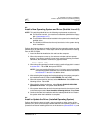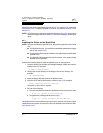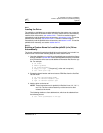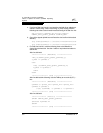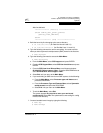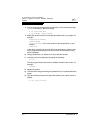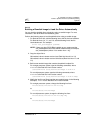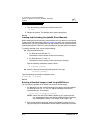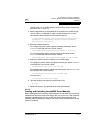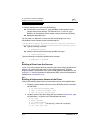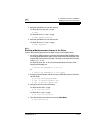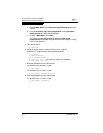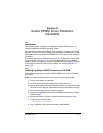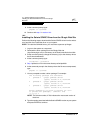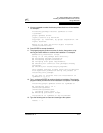
FC2354601-00 A 9-11
9 – Red Hat Linux Driver Installation
Install or Update the Driver (Installed Operating
System)
Linux 6.2 and 7.0), or to /lib/modules/<kernel release version>/drivers/scsi
(Red Hat Linux 7.1 and 7.2).
3. Add the dependency for the qla2300 driver and build the ramdisk image.
You can either run “depmod” or make sure the following line is in the
/lib/modules/<kernel release version>/modules.dep file:
/lib/modules/<kernel version>/kernel/drivers/scsi/
qla2300.o: /lib/modules/<kernel version>/kernel/
drivers/scsi/scsi_mod.o
4. Build the ramdisk image file.
For a single-processor system, type the following commands, where
x.x.xx–x.x is the Red Hat Linux version number:
/sbin/mkinitrd /boot/newinitrd-image x.x.xx-x.x
For a multiprocessor system, type the following commands, where
x.x.xx–x.x is the Red Hat Linux version number:
/sbin/mkinitrd /boot/newinitrd-image x.x.xx-x.xsmp
5. Modify the /etc/lilo.conf file to load the new ramdisk image.
For a single-processor system, change the following line, where x.x.xx–x.x
is the Red Hat Linux version number.
initrd=/boot/initrd-x.x.xx-x.x.img
For a multiprocessor system, change the following line, where x.x.xx–x.x is
the Red Hat Linux version number.
initrd=/boot/initrd-x.x.xx-x.x.smp.img
The new text is:
initrd=/boot/newinitrd-image
6. Type the following command to load the new lilo file:
# lilo
7. Restart the system. The qla2300 driver loads automatically.
9.4.2.5
Loading and Unloading the qla2300 Driver Manually
Before loading the driver manually, first build the driver from the driver source files
obtained from the source code driver floppy disk (see section 9.5). After manually
loading the qla2300 driver, you can access the devices and unload the driver
manually without restarting the system. The driver is also unloaded each time the
system is restarted.



